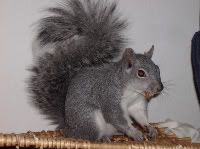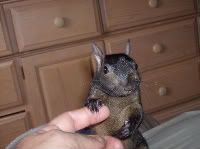Sorry, it was time for my nap.

About vitamin A, just to recap, here are the concerns:
1. We are talking about concentrations of one nutrient (beta-carotene) at extremely high levels: currently around 700% of the recommended amount, and I guess the proposed increase would push it well into the 2000% range. When retinoid intake is adequate (as it would be with the healthy diet), all of this beta-carotene would be "excess" which means it would be stored in the fat. This can cause you to turn orange. In humans, that can occur at 10X recommended levels. This also seems, on the face of it, to violate the principle of a "balanced diet."
2. Though not actually toxic, beta-carotene does interact and interfere with the absorption of other nutrients. For example, the various carotenids all compete with one another. High beta-carotene intake suppresses lycopene, which is vital for eye health, and its function cannot be replaced by beta-carotene. Beta-carotene also plays a role in bone-building, and at least one study found high intake associated with osteoporosis in humans (this is not conclusive by any means of course; it's just one study that I know of). And it is better established that beta-carotene interferes with vitamin E absorption. This has been found specifically in rats (i.e., tissue concentrations of vit E were half the normal level when given excess beta-carotene), which is concerning, at least to me. Vit A is abundant in foods; vitamin E much less so.
3. Some of the high-vit-A foods are also quite energy dense, such as sweet potato. So in that case, there are two areas of concern.
4. Dr. Calvert asserted that these foods should never be fed to squirrels.
I like to err on the side of caution, always. I know that personally, I would limit these foods for my own squirrel, but the issue is whether we're going to change or remove the limits on the Healthy Diet.
And frankly, I'm curious why the huge "pro vitamin A" push?



 Reply With Quote
Reply With Quote


 JAQUELINE (RELEASED) AND TALULA (RELEASED)
JAQUELINE (RELEASED) AND TALULA (RELEASED)
